Three Rivers Fibershed Regional Fiber Sourcebook
What is a Regional Fiber Sourcebook and how do you use it?
A regional fiber sourcebook is a living resource which features stewards from within a fibershed’s strategic geography. A regional fiber sourcebook addresses local timelines, current availability among stewards, pricing, examples of local fiber prototypes, with sourcing details that make the process straightforward and clear for all who want to incorporate local fiber into their offerings. There are illustrated timelines to help viewers better understand the typical flow of fiber production and processing within the strategic geography.
The Three Rivers Fibershed sees this sourcebook as a way to promote, connect, and give stewards equal access to opportunities, particularly with makers and brands. Three Rivers Fibershed organizers have found it difficult to show the full potential of using a local supply system when there are few samples and no unified format for displaying the story of our stewards. Inevitably, this gap of understanding and opportunity leads to a gap in connecting our stewards to the makers and designers who are interested in the narrative of local, climate-beneficial fiber.
To use this resource begin by considering what type of product is desired and the potential fiber qualities that would best suit the needs of the product. Many stewards have listed micron counts and/or end use suggestions to give parameters for the best application of their fiber. As a simplified explanation of micron count, a fiber with higher micron count creates extremely durable, long lasting outerwear while a fiber with lower micron count creates soft, next to skin appropriate textiles, especially for more sensitive areas of the body like the neck. This resource can also be used to aid in combining more than one steward’s fiber to create a unique blend of yarn to best serve the desired outcome. For further questions about fiber, each steward’s contact information can be found on their producer page.
Who should use this book and why?
Knitters, spinners, designers, brands and consumers seeking to source ethical, sustainable materials that strengthen our decentralized fiber system will find this book most helpful. Because the book can be updated year to year, it will continue to serve as a relevant resource for individuals looking to collaborate with stewards within the Three Rivers Fibershed regional fiber system.
A regional fiber sourcebook supports future efforts in prototyping, development of local textiles and products, and greater understanding and transparency of stewards within the Three Rivers Fibershed strategic geography. Through these connections, greater visibility will create new market opportunities allowing for increased financial support for stewards to pursue endeavors such as climate-beneficial certification, implementation of agricultural stewardship practices on their farms, cooperative fiber opportunities, further research and prototyping, and strengthen our textile supply system in the face of continued climate change.
In a previous microgrant award, the Three Rivers Fibershed identified market accessibility and consumer education as two of the top three needs of our stewards. Using this resource allows us to address both needs and create a strong decentralized community-led fiber system.
Illustration by Jaclyn Charais
inspired by Amanda Coen: https://www.amandacoen.com/
trf fiber guide for the Soil to Sock Challenge
Understanding Minnesota’s Wool Economy
A Collaboration between Get Bentz Farm, Three Rivers Fibershed, and the University of Minnesota Regional Sustainable Development Partnerships (RSDPs). Understanding Minnesota's Wool Economy aimed to study the 'who,' 'what,' 'where,' and 'why' of wool and meat production in Minnesota's sheep farming industry. With a focus on sustainability, this project also sought to understand the motives behind shepherds' use of regenerative and conservation farming practices.
A graduate student researcher worked closely with Three Rivers Fibershed, Get Bentz Farm, and the U of MN RSDPs program over the course of the Fall 2021-2022 academic semester. Project methods included interviews with shepherds, informational surveys, printed and virtual
informational products for public distribution, a written report, and a prepared presentation.





















